

ARTIST SPOTLIGHT: ROBERT RESNIK

A PIONEER IN UNEARTHING AND RESTORING CLASSIC LOST SOUL, DOO WOP, AND OTHER VINTAGE RECORDINGS FROM THE 40’s 50’s, 60’s & 70’s
Resnik Music Group’s song “So Long Lover’s Island” by The Blue Jays and recorded in the 1950’s was placed by MusicSupervisor.com into the film Green Book, winner of the Oscar for Best Picture of 2018.
Resnik Music Group’s Zelma Sanders was the first black female record producer in New York during the late 1950’s
Resnik was actress Nichelle Nichol’s manager — and was on the set in 1968 when Star Trek’s William Shatner (Captain Kirk) and Nichelle Nichols (Lieutenant Uhura) filmed the first ever interracial black and white kiss on national TV.
Q: How are you today?
A: My wife is gorgeous, our daughter, Robin a sweetheart, our three Chihuahua’s are fabulous. Life is beautiful.
Q: Tell me about you’re first connection with music.
A: I was born and raised in Charlotte, North Carolina. I was in high school, in my teens, and I gravitated to “black” music. When I was growing up in Charlotte you had “white” radio stations and “black” radio stations. The “white” stations would not play “black” music and visa-versa.
I liked black music, I felt close to it. I used to go out to little honky-tonks where I’d be the only white guy – the “ofay.” I’m talking a dirt road to a barn. There was an all-black band, with black people dancing and shouting. I’d be the only “ofay” there and got to know a lot of the people in the bands such as singer Lavern Baker. I’m talking about the 1950’s in Charlotte, and it would be hard for me to get another white person to go with me! I would be the only “ofay” there. But they accepted me and we had a good time.
I used to go to a lot of black artist concerts that came to town I’d often be the only white person there as well. James Brown, The Hollywood Flames, Detroit’s Ivy Joe Hunter and Chuck Berry when they were all first starting in the late 50’s. After college I started putting on rock concerts in Atlanta. It was tough to get black acts booked in Atlanta then as I was catering to a white crowd who wanted white oldie groups of the 50’s. I lost all my money! But I loved the music.
Q: Tell me about your early years in Los Angeles as a manager for actors and musicians like Nichelle Nichols, Gary Busey and Van Morrison.
A: When I got my first divorce, I was living in Seattle, working with my father in the furniture business, then I moved to LA to get into show business. I was living with a fraternity brother. He got me going in management, then I branched out and started acquiring my own clients. Nichelle Nichols was my big money maker, even before she played Uhura on Star Trek, I had her in three other series.
Gary Busey just walked in my office one day. I had an office on South Beverly Drive in Beverly Hills. He had gotten my card from another music group. Gary came in, we hit it off – boom boom – I got him a record deal. Had a nice run with Gary.
Q: Tell me about being on the set of a very special episode of Star Trek.
A: I met Gene Roddenberry. At the studio they had a pilot script and the role of Uhura was with a white actress. Between me and the agent, we were trying to get her (“the black bitch” as Nichelle called herself) the role of Uhura. The three of us met with Gene for one hour. He was talking about what Star Trek meant, his vision. Nichelle got the role.
I was there at almost every filming of the series episodes. I’d go out and have lunch on the lot, and I got to meet Shatner. Nimoy even gave me a pair of his ears to play with! I even met Lucille Ball. She and her husband owned Paramount at the time.
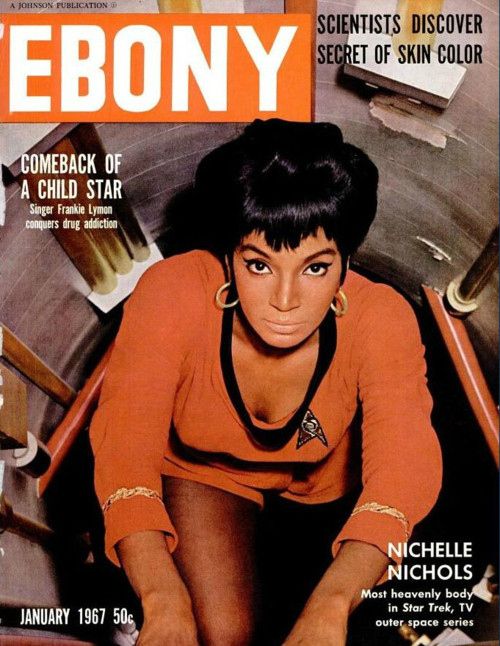 So Roddenberry was going to have Captain Kirk and Uhura do an actual kiss on the lips. It was the first time ever on American TV that a white person kissed a black person. I was there at the filming. The editor of Ebony Magazine flew out, and interviewed Nichelle and me. They put her on the front cover. In that issue of Ebony, I was the only “ofay” who had a picture.
So Roddenberry was going to have Captain Kirk and Uhura do an actual kiss on the lips. It was the first time ever on American TV that a white person kissed a black person. I was there at the filming. The editor of Ebony Magazine flew out, and interviewed Nichelle and me. They put her on the front cover. In that issue of Ebony, I was the only “ofay” who had a picture.
Q: So why did you leave Hollywood?
A: My father died and left me a furniture store in Seattle. I left and got out of the business. I got into the retail furniture business. Jimmy Carter was President; unemployment was in the high 20%. We ended up closing the store. I married a 2nd time. I was broke. Then I moved to San Francisco and started a furniture rep company. Did quite well, and ended
up buying into a factory in L.A., and business exploded. When they asked me to go to the East Coast to run sales and marketing, I did.
We went from a little company to a fifty million dollar company in three years. It was called Royal Creations. We manufactured inexpensive ready-to-assemble bookcases and desks. Our big retail clients were Walmart, Kmart, and Levitz furniture. We went after the majors, got lucky, and I sold out and retired. I moved to Hilton Head Island, met my current wife Sharen and we’ve been married 35 years. We have a 29 year old daughter name is Robin, a hair stylist. Sharen is my partner in everything from getting new business, signing contracts, and signing checks. We moved here after Hilton Head because her parents had retired here to Florida and were senior, and needed help.
Q: How did you find people like producer writer Zelma Sanders and the artist Maurice Williams? They have a lot of tracks in the Resnik catalog.
I got bored in retirement and said maybe I’ll get back into the music business. I bought a catalog from a lady who was a receptionist at a furniture company. She said her grandmother had a music company and I don’t know what to do about in Atlanta. So I bought Zell’s Music from the granddaughter of Zelma Sanders. That was my first catalog purchase.
Hopefully someday somebody will pick up and tell Zelma Sander’s story. I got to know the grandchildren, there were five of them I worked with to get the legal agreements done.
Zelma Sanders was the first black female record producer in New York. Everything she did, white men put up roadblocks. She persevered — if she made a dollar, she spent a dollar, always trying to promote the records. All of her clients came from The Projects, people who lived on the 4th floor or in the building next door. The Jaynetts, Clickettes, the Hearts – all these different groups were just kids who lived in the tenements.
Rex Garvin was her music director. He started with her when he was 14. He lived in the next building, — all government subsidized housing in the late 50’s.
Zelma would press a record and go sell it to record stores, get the cash, then pay the studio or whoever printed the records. She was a go-getter. She carried a gun! Nobody wanted to mess with her. She was a pioneer of the industry.
Her first big hit was “Over the Mountain Across the Sea” with Jonnie and Joe. Jonnie Richardson was her daughter. And Joe Rivers who I talk to occasionally still goes out and sings. He is on PBS quite often. His backup singer now is a girl who used to be with The Toys one of our bands. I stay in touch with some of these people that I can find. I started with Zells Music and put the word out that I wanted to by songs. One thing led to another and here we are now. I’m up over 6000 copyrights.
Q: We’ve been excited about the placement of “So Long Lover’s Island by The Blue Jays in Green Book, which won the best picture Oscar for 2018.
Thank you, I’m proud to be associated with MusicSupervisor.com who got the placement.
Q: Do you know any more about The Blue Jays and “So Long Lover’s Island?”
Leon Pell was the writer. Leon passed away in the late 1990’s. The Blue Jays were a local L.A. black group that had a modest following. They said they were Doo-wop with a hint of Gospel. They were discovered and signed to Milestone Records. Milestone owned by Werly Fairburn, who had a major hit with Jim Reeves, “ I Guess I’m Crazy.” Werly Fairburn was inducted into Rockabilly Hall of Fame. Werly signed the Blue Jays to his label based on his success with another Black LA group called The Paradons who had a hit record called “Diamonds and Pearls.” We own that complete catalog. After about two years, the Blue Jays disbanded. Leon wrote 10 or 12 songs. We own them all, all his publishing and we all the masters.
Also, out in the San Fernando Valley there was a lady named Madelon Baker. She owned a company called Audio Studios that released 200 plus records. No major hits, but a lot of modest hits. We bought her catalog nine or ten years ago. She invested with Werly Fairburn to give him the money to start his record label. When he died his label went to his daughter. We bought Milestone from his daughter who lives in Sacramento. We communicate with them, and we send checks. Ironically “So Long Lover’s Island” was a modest hit, their big hit was called “Lover’s Island.”
Q: What is the one thing you’d want to say about your catalog?
A: The biggest pride that my wife Sharen and I get out of our music company is sending checks to those older artists and writers. If we get a master or sync license we get money to the artists and writers. We do like to give back. I get many phone calls, especially from senior ladies and gentlemen saying, Buddy, you helped me pay rent this month, God bless you Buddy. Stuff like that. Our industry has taken advantage of so many of these people. That’s what we want people to know about us: we’re not here to take advantage of anybody. We love to place the music, and then we can help somebody.
We just concluded the purchase of over 800 new songs — mostly jazz, blues and early R&B from 1944-45 on. We ended up owning publishing on five songs from Nat King Cole from 1945.
Q: Any more thoughts on the Resnik Music Group?
A: I love the buying, I love the hunt. I love helping those great artists and their families. I made an offer on a catalog yesterday — 20 grand for 100 songs. You’ll love it. Included in the 40’s collection is Oscar Moore and Frankie Lane. On some of these we end up owning the masters and the publishing.
Q: That’s wonderful, the Golden One-Stop!
A: By the way Sharen and I had an opportunity recently to meet Johnny Mathis. What a delightful encounter! This was after a performance in Mississippi at the Beau Rivage Hotel. We own one of his big hits “No Love But Your Love” 100% publishing, but no master. I hear it all the time on the radio. We get paid nicely! Once he knew that we owned that song, he was telling us it was one of his favorites of all time.
I also broke the ice when I told him I remembered he was running track at Balboa High in San Francisco. He said he didn’t go to Balboa, and went to the Catholic school nearby, but practised at Balboa. I used to recruit football players for University of Washington in my early days. I played, football and went to school on a scholarship. I played guard. Johnny and I just started talking about track and what were his track times. He had a track scholarship, but he chose to go for a music career.
Q: You presided over the first bi-racial kiss on American TV, and now you preside over some of the greatest white and black music from that era! Any concluding thoughts?
A: (Sharen Resnik added): “It’s been a pleasure to have met so many of the artists and hear their stories. We try to help the surviving artists and their families along the way. It’s a labor of love.”
Interview by Julius Robinson © 2019
-
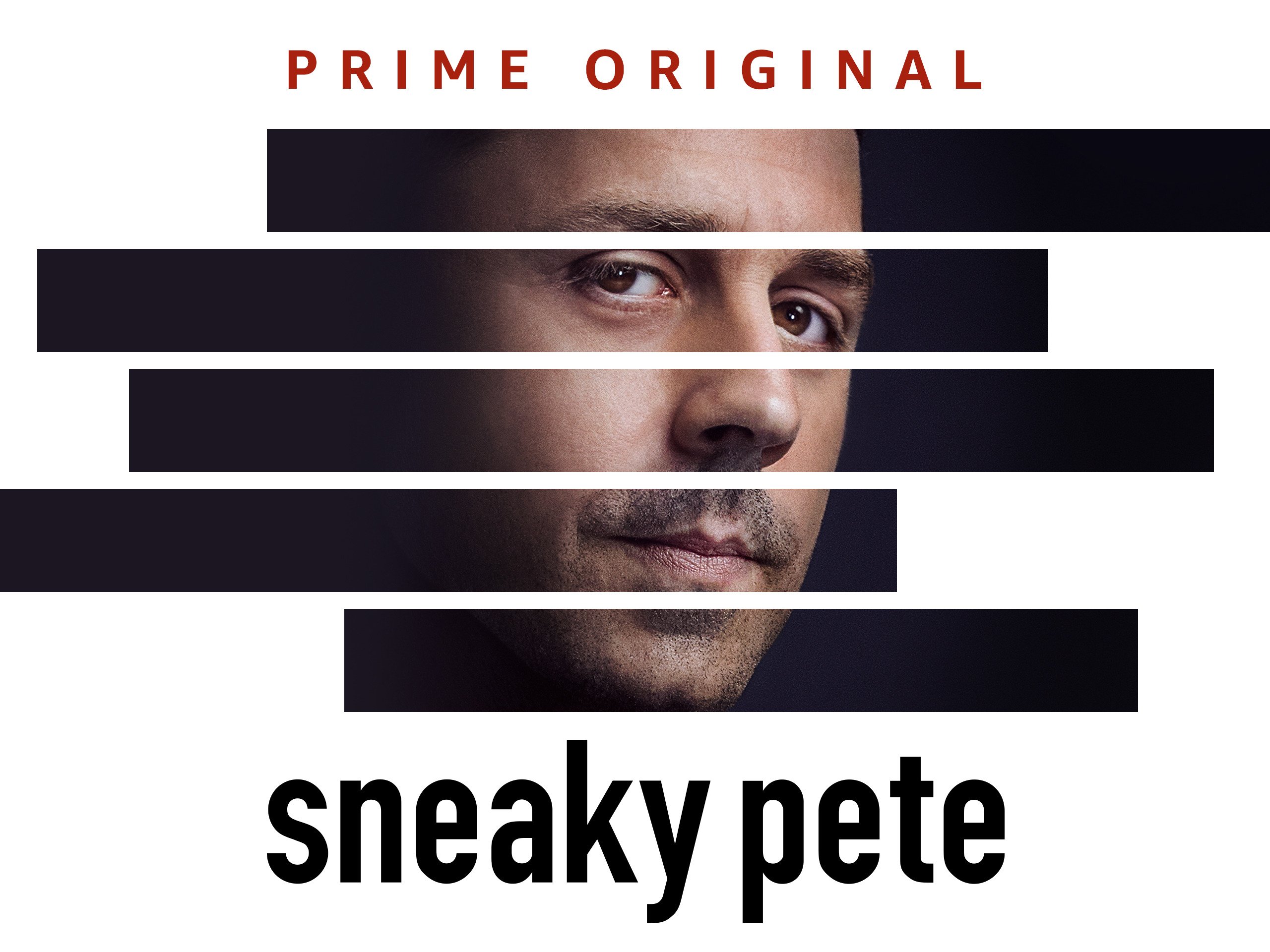 Sneaky PeteJohnnie & Joe - "We Get That Feelin'"
Sneaky PeteJohnnie & Joe - "We Get That Feelin'" -
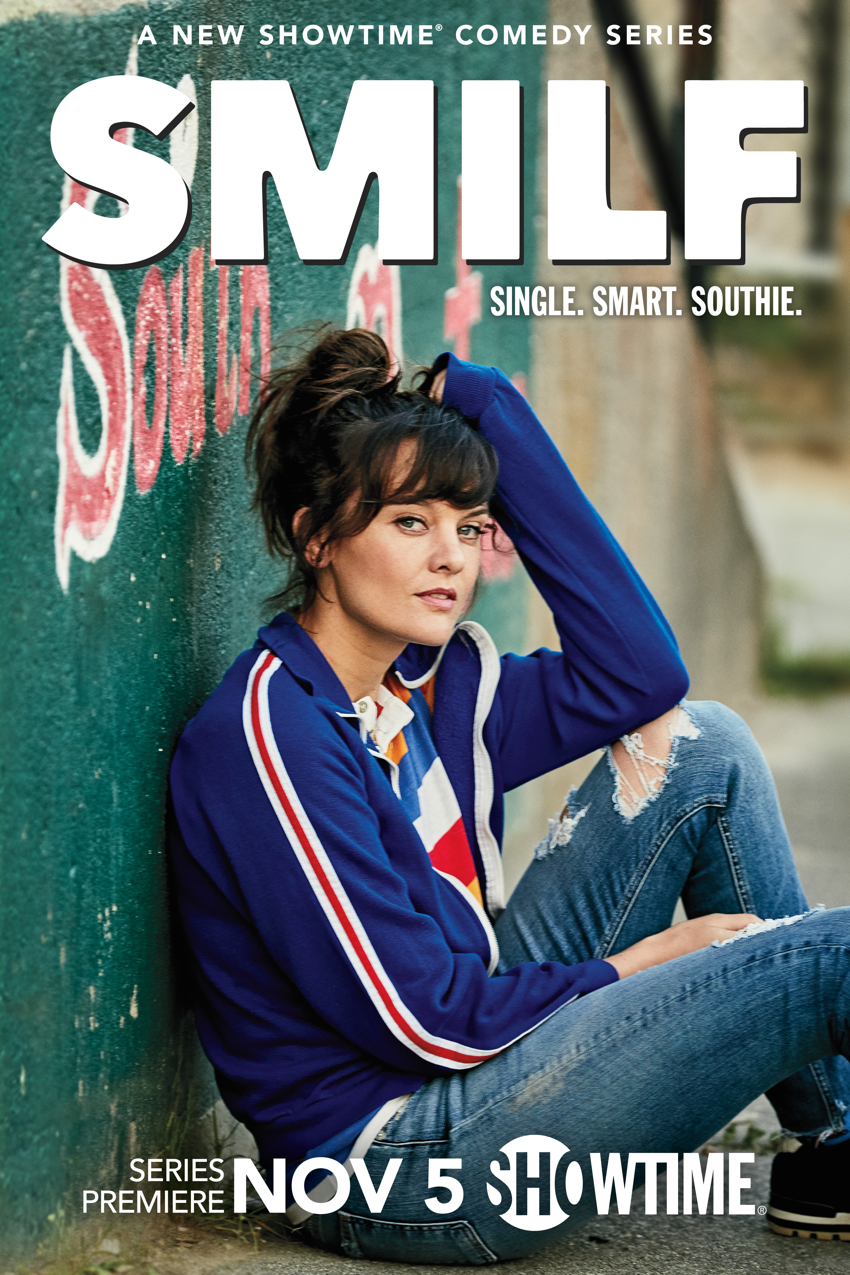 SMILFDarlene Paul - "In Darkness, In Daylight"
SMILFDarlene Paul - "In Darkness, In Daylight" -
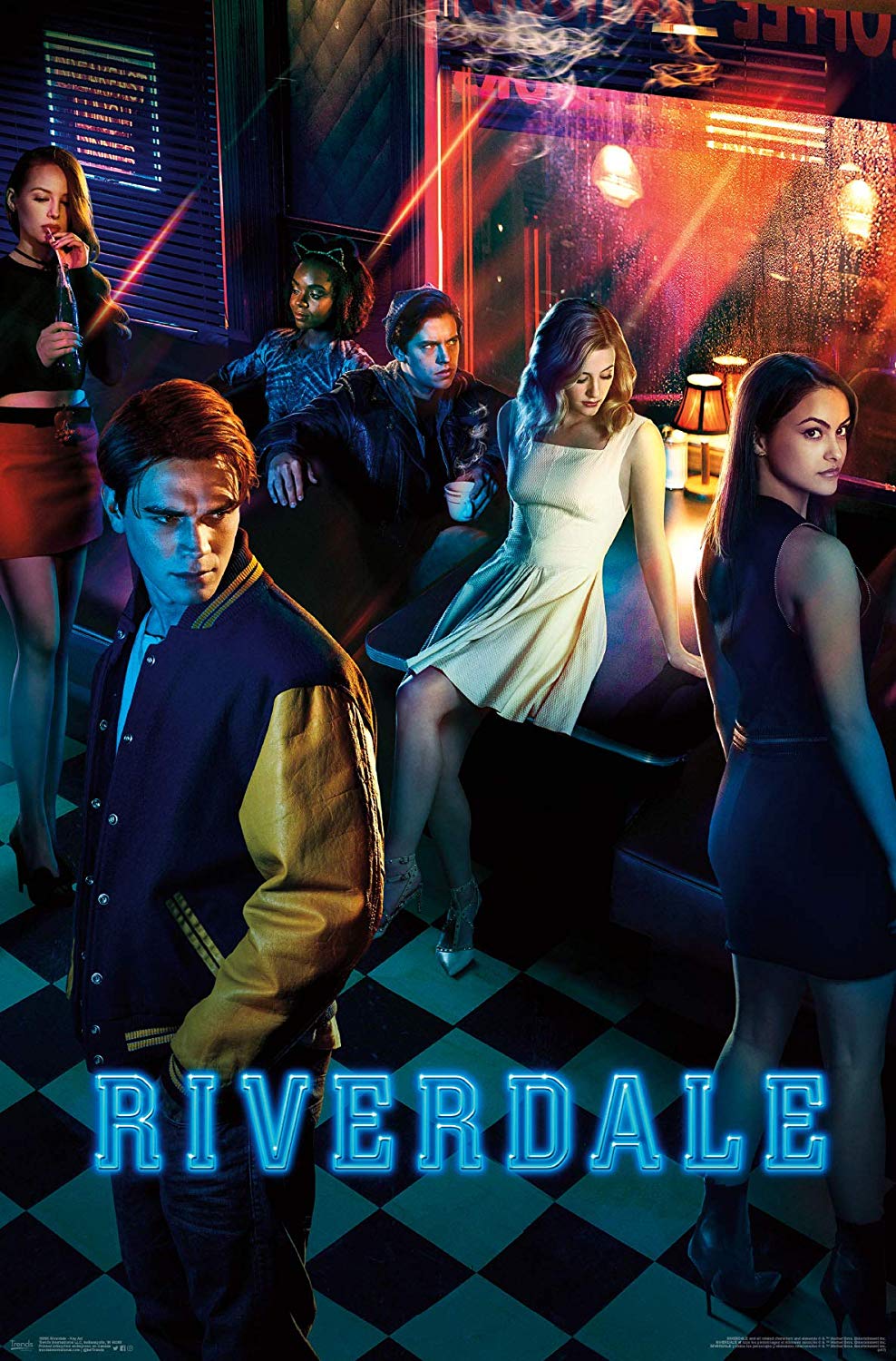 RiverdaleThe Clickettes - "But Not For Me"
RiverdaleThe Clickettes - "But Not For Me" -
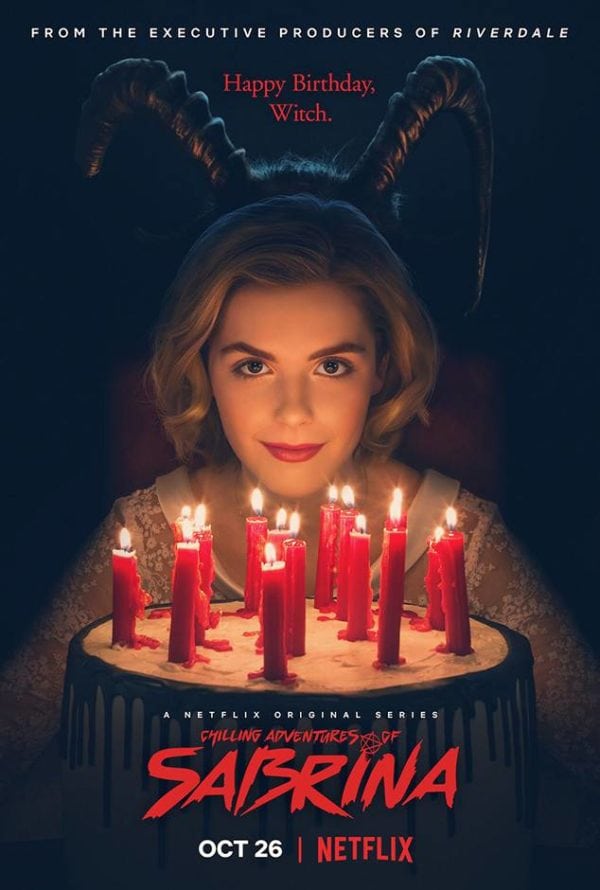 The Chilling Adventures of Sabrina (Netflix)Judy Proctor - "Storm In My Heart"
The Chilling Adventures of Sabrina (Netflix)Judy Proctor - "Storm In My Heart" -
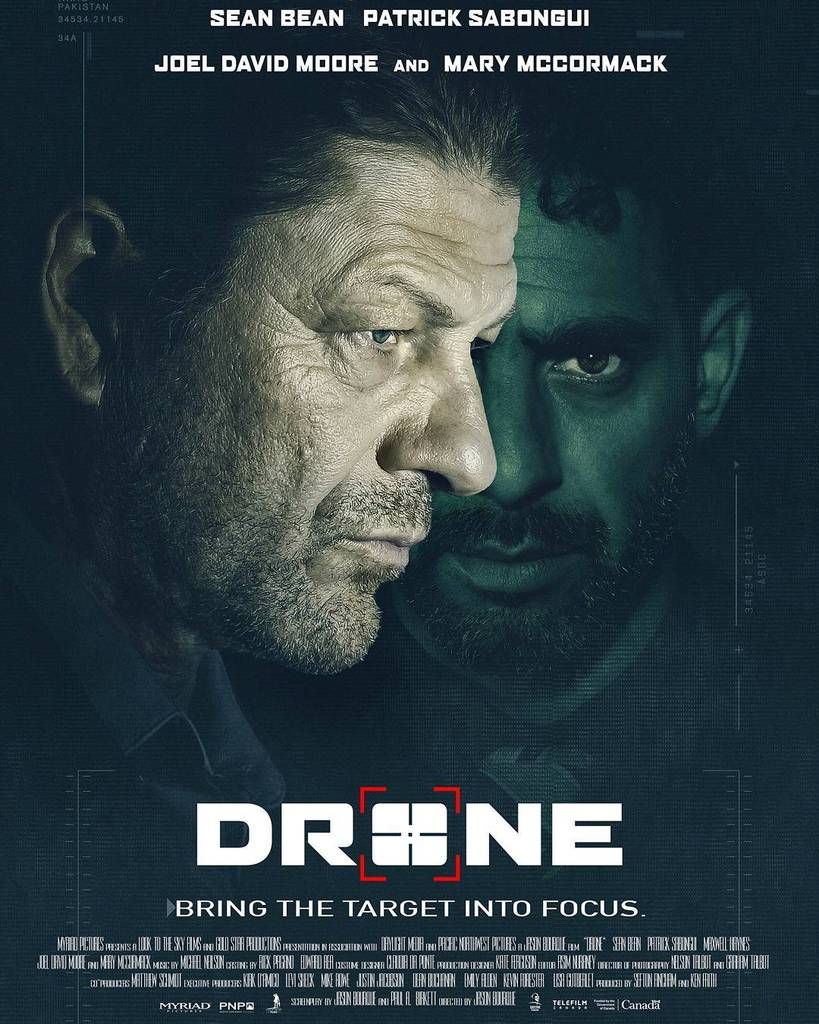 DroneMaurice Williams & The Zodiacs - "Brothers"
DroneMaurice Williams & The Zodiacs - "Brothers"
THE CASE ACT + YOU

Have you heard about the Case Act?
For those who just returned from touring off-the-grid, here’s a quick summation:
The CASE Act (H.R. 2426), establishes a much-needed alternative for independent and unaffiliated creators and small businesses to protect their copyright against infringement. It gives artists and producers control over their music by requiring radio broadcasters to obtain permission before playing music on AM/FM radio.
Bottom line: The CASE Act is a simple solution that provides a very real-world and much-needed benefit. Artists and creators currently have rights but no remedies, unable to spend the $400,000 it takes to successfully litigate a copyright case under the current system. As a result, creators are victim to rampant infringement and are in desperate need of an alternative, more affordable and entirely voluntary legal process. Follow this link for a complete Q&A https://www.authorsguild.
The CASE Act is a true bipartisan bill with the support of 100+ Members of Congress, and the backing of dozens of stakeholder groups that represent the entire creative community (music + photographers, authors, designers, graphic artists etc.). Further it recently passed unanimously out of both the House and Senate Judiciary Committees, and is primed for passage on the floor.
In other words, it’s a no-brainer!
During Grammy District Advocate Day

Paul Wall-Hip-Hop Artist/Entrepreneur, Danny Jones-Engineer/Producer, Neil Crilly-Recording Academy, Senior Regional Director, West Region, Rep. Michael T McCaul-10th District of Texas, Barry Coffing-Writer/Producer/Grammy District 10 Captian, Charles Coleman II-Hip-Hop Artist/Writer/Producer
Round One: Artists win
Three weeks after District Advocate day, songwriters, artists and other creators of all levels scored a big win in Washington. The Copyright Alternative Small Claims Enforcement Act (CASE Act) was passed in the House of Representatives by the vote of 410-6.
Final Step:
We are very close to getting the CASE Act passed. We have one more step – the US Senate. Unfortunately, there are presently two Senators standing in the way of the bill passing into law. They are Senators Ron Wyden (Oregon) and Rand Paul (Kentucky).
What can you do?
If you are a US citizen, we need you to email Senators Wyden and Paul and urge them to support creators by supporting the CASE Act, S. 1273.
To reach Senator Wyden, please email Greta Peisch: Greta_Peisch@finance.senate.
To reach Senator Paul, please email John Maniscalco: John_Maniscalco@paul.senate.
Sometimes we need to pull together to make a better world for the music makers.
Sounds Like: Mumford and Sons, Damien Rice, Chuck Barry, The Lumineers, Band of Horses Vibe: Cinematic, Emo, Alternative, Uplifting, Alternative
Audio: Listen Now
Sounds Like: Otis Redding, John Mayer, Aloe Blacc, Andy Davis, Jackie WIlson
Vibe: Funky, Neo-Soul, Fun, Quirky, Old-School, Feel-Good
Video: Watch Now
Sounds Like: Bob Dylan, John Lennon, Neil Young, Crosby, Stills & Nash, Tom Petty
Vibe: Moody, Southern, Roots, Quirky, Psychedelic
Audio: Listen Now
Sounds Like: Hasley, Haley Kiyoko, Maggie Lindeman, Julia Michaels, Joss Stone
Vibe: Pop, Chill, Singer-Songwriter, Top 40, Electronic
Watch Now: Listen Now
Sounds Like: Rita Ora, Miley Cyrus, Lady Gaga, Bea Miller, Tove Lo
Vibe: Dreamy, Electronic, Dance, Top 40, Trap
Video: Watch Now

No, our pride for Spenser (and his career) centers on his own efforts to make himself a “Thriving musician”…his words, not ours. The man actually has ThrivingMusician.com as his website!
As the founder of Thriving Musician, Liszt’s mission is to drastically improve the lives of musicians by teaching financial literacy, mindset, and music business through speaking, clinics, blogging, podcasting, courses and coaching.
Far from being an ode simply to his own music and career, Spenser has a fully-articulated business helping other musicians tackle all areas of their career.
This means subjects like “Emergency Funds”, “Tax Basics For Musicians” and (our favorite) “Money First, Music Forever”.
Spencer offers coaching in addition to other support that should make his website a one-stop for musicians looking to help themselves and also start building a solid foundation to build their careers on.
Awesome job, Spenser – we’ll always be cheering you on!

Springboard 2018
Opened for One Republic in front of 50k fans
Of Sea & Stone
Springboard 2018
Bose Sponsorship
Wildeyes
Springboard 2017
Management Deal & Sponsorship
Paper Pilots
Springboard 2017
Opening Slot on Ok!Go! Tour
Sami
Springboard 2017
Production Deal & Opening Act
Halston Dare
Springboard 2016
Millions of Instagram Listens
Korbe Canida
Springboard 2013
Film Placement
Bobby Lyle
Springboard 2013
Film Placement
Neckbone
Springboard 2013
Distribution Deal
Chase Hamblin
Springboard 2013
Radio Play & Interview
Jesse Roach
Springboard 2013
Manager, “American Idol”
J Shep & Standard
Springboard 2013
Recording Contract
EmJae Ross
Springboard 2016
Production Deal
BroPedro
Springboard 2016
Production Deal
Len Knox
Springboard 2013
Live TV Performance & Interview
Springboard 2018
Song placed in the hit TV show “Grownish”
Love Past Blue
Springboard 2018
Signed to Guns N’ Roses manager & Slot on Warped Tour
Faulkner
Springboard 2017
Multiple Endorsement Deals
Ships Have Sailed
Springboard 2017
BalconytvLA Appearance
Matt Grady
Springboard 2017
Producing A Single
Love Past Blue
Springboard 2016
Management, Production Deal & Documentary
Hazy Ray
Springboard 2013
Radio Play & Interview
Prime Example
Springboard 2014
Film Placement
Ashley Tomen
Springboard 2014
Film Placement (End Title)
Ambivalence
Springboard 2014
Radio Play & Interview
Aaron & Ashten
Springboard 2014
Radio Play & Interview
Lucas Jack
Springboard 2015
Radio Play & Interview
Crawford Brothers
Springboard 2015
Management, Balcony TV
Lost Element
Springboard 2014
Radio Play & Interview
Springboard 2018
Featured on Fox’s “Showtime At The Apollo”
The Frets
Springboard 2018
Landed recording/producing in Nashville by Billy Smiley (5 time Grammy Award Nominee & co-writer on 27 #1 hit songs)
John Lindahl
Springboard 2017
Signed to Elsium
Salio
Springboard 2017
Production Deal
RHU
Springboard 2017
UK Radio Play & Film Placement
Jamell Richardson
Springboard 2014
Film Appearance
Fifty Dollar Dynasty
Springboard 2014
Radio Play & Interview, Film Placement
Jordan Coffing
Springboard 2014
Balcony TV, Radio Play & Interview
A Tribute To The Sun
Springboard 2014
Steamboat Amp Endorsement
That Boy Zarius
Springboard 2014
Film Placement
Andrew James
Springboard 2014
Radio Play & Interview
TomKat
Springboard 2015
Film Placements, Radio Play & Interview
Dustin Prinz
Springboard 2014
Radio Play & Interview
Springboard 2018
Opened for Little Big Town and Hunter Hayes
Drew
Springboard 2017
Major Label Distribution
Steff Neff
Springboard 2017
Mixing by Dale Pennar
Zac Person
Springboard 2016
Reality Show & Fender Endorsement
Kenna Danielle
Springboard 2014
Radio Play & Interview
M16 & The Full Moon Wolves
Springboard 2015
3 Film Placements
Curse & Cure
Springboard 2015
Radio Play & Interview
Korbe Canida
Springboard 2015
Film Placements, Radio Play & Interview
Avenue Of The Giants
Springboard 2015
Production Deal
Fifty Dollar Dynasty
Springboard 2015
Film Placement
Late Friday
Springboard 2015
Production Deal, Radio Play & Interview
COMPOSER CORNER: ISHITA SINHA


Woven Together for Our Missing and Murdered Indigenous Relatives
Amanda Webster, a mother of three had moved from Arizona to the Tri-State area in Kentucky to find work so she could support her kids – a 10 – year old boy, a toddler and a month old baby. On December 3, 2018 she was found murdered in a Florence hotel room.
Just a year earlier Vanessa Tsosie a 29-year old Native American woman from Arizona was found dead in at Brook Haven Park in Farmington New Mexico. The police and detectives involved in the case believe she was murdered, as there were signs of “foul play” on the scene.
(Source: http://www.ksje.com/news/local-news/police-investigate-womans-death/)
In 2010 42-year old Terry Benally, a transgender Navajo woman was beaten to death in Albuquerque New Mexico. It is suspected that race was a factor in the killing.
(Source: https://nabpi.unm.edu/assets/documents/mmiwg-briefing-paper.pdf)
Cecilia Finona is as of this moment still reported missing. She was last seen at her house in Farmington New Mexico on May 30th. Her family and friends have been searching for the New Mexico grandmother and military veteran for over a month. She is of Native American descent.
(Source: https://www.ktnv.com/news/search-for-missing-navajo-woman-nears-one-month-mark)
What appears as disturbing, yet seemingly isolated events, is in fact an overwhelming and devastating issue all across the United States and Canada. The so-called “Highway Of Tears”, a 720-kilometre section of the Canadian Highway 16 that connects Prince George and Prince Rupert, (British Columbia, Canada) gained its name because of the disproportionately high number of indigenous women who were either killed or went missing in its vicinity.
(Source: https://en.wikipedia.org/wiki/Highway_of_Tears)
According to CNN an “estimate of the National Crime Information Center shows 5712 reports of missing Native American women in 2016 alone”.
(Source:https://edition.cnn.com/2019/07/15/us/native-woman-remains-found/index.html)
The album Spirit Line: Woven Together for Our Missing and Murdered Indigenous Relatives was the brainchild of Clara Natonabah, Santa Fe based singer-songwriter, of Navajo (Diné) and Dutch descent. The album features artistic compositions from different Indigenous nations and discusses the issue of Missing and Murdered Indigenous Women, Girls, Trans & Two-Spirit people (MMIWGT2S). All proceeds from the album will go to the Sovereign Bodies Institute, a research institute dedicated to community-engaged research on gender and sexual violence against Indigenous people. Annita Luchessi, Executive Director of SBI, has decided to see over all future sales of the album, and include copies of the album in care packages being sent to affected families.
The organization Three Sisters Collective is devoted to empowerment of Indigenous lands and communities. Through collaborative projects and activism they aim to address issues like MMIWGT2S and give a voice to those looking for their loved ones. As part of this mission they decided to co-fund Spirit Line and help make the album a reality.
We conducted an interview with Ishita Sinha, the producer of Spirit Line to get a better understanding of what the listener can expect from an album dealing with such a harrowing topic.
1. How did you first meet Clara Natonabah, the Creative Director of the album Spirit Line: Woven Together for Our Missing and Murdered Indigenous Relatives?
Clara Natonabah and I went to Berklee College of Music. We had a class together during our first year at the college, which is where we met. We became really good friends and it was great to have someone you could count on in the crazy big city of Boston. We would run class projects by each other and discuss future goals. It’s funny how many times in the music business your college friends become your contemporaries.
2. How did production on the album begin?
Clara had already spoken with all the women who were to contribute their pieces to the album, and had been working with them to get the audio files ready to be sent to me. Her preparedness really helped in setting a good start to the project. Say Her Name was the first track we worked on. For that, she sent me audio stems of lead vocals, a few Native American drum tracks, and her background vocals. I then EQ-ed, quantized, cleaned up those stems, and built the track around that material. The processes for Youth Prayer Chant (YPC) and Justice were similar too. I got lead, background vocals, and guitar stems for YPC and Clara’s lead vocals for Justice. I began building the tracks and sent them to Clara for feedback.
3. How did Clara guide you through the process of navigating this sensitive topic?
Her feedback and guidance were crucial to the way the tracks—and the entire album—turned out. The purpose of the album is to bring forth to the world the story of Missing and Murdered Indigenous Women, Girls, Trans & Two-Spirit people; to educate and spread awareness, and also start dialogues in communities. We had to be sure that every element contributed to that purpose—whether instrument, voice, or effect, like the sound of the wind in Justice. Our countless discussions before and during the making of this album were important in understanding the depth of that responsibility. One point that stuck with me the most during production was that, yes, we will be sensitive in our approach, but without compromising the boldness and fierceness in presenting the stories of women. The fierceness is not to be mistaken as aggression, but to assert the urgency of the issue at hand. You can hear that emotion in the chorus of Justice and in the second verse of YPC.
4. Some of the artists on this album are quite new to the world of music and music production. How did you help them feel comfortable?
The album is first and foremost the voice of the Native American people. And who better to tell their story than the mothers and daughters of the community? When you listen to the album you will hear the honesty in their voices. When I first heard the raw vocal stems for all the songs and spoken word pieces, I was struck by that same honesty. To preserve that rawness, I kept my adjustments minimal—editing and quantizing the audio, a little bit of pitch correction, and some EQ. I didn’t want the singers and speakers to worry too much about pitch and other technicalities. It was the intention and emotion in their vocal performances that was most important, which also couldn’t be replaced using any plug-in or processing. Working as a team with the songwriters to fully realize their piece is what I love the most about being a producer.
5. There is a part in the song Say Her Name where we hear the names of girls and women who went missing. Tell us about your creative approach to this song.
The song was written by Dr. Christina Castro (Jemez Pueblo, Taos Pueblo & Xicana) of the Three Sisters Collective, who co-funded the album. The song calls you to speak the names of the missing women and to keep their memories alive. At the end of the song you hear those names spoken by Christina and her five-year-old daughter, Maize Jade Castro Harris. I wanted the listener to feel like they were standing between them. I had their voices on three separate channels and used Logic Pro’s Tremolo plug-in to automate the panning on each of the channels. That way, one name starts on the left and before it ends on the right, the next one starts on the right and moves to the left. It’s a simple trick and it helped me convey that haunting effect. There is also reverb and delay that helped expand the space that you’re in with the two voices.
6. Tell us more about Youth Prayer Chant, which was written by a thirteen-year-old songwriter, one of the youngest artists on the album.
Youth Prayer Chant was written by Anjamora Ishi Sato McLaughlin (Taos Pueblo, Ainu Japanese & Irish). The beauty of this album is that it brought women from all generations of society to come together as one voice. As the name suggests, the song is essentially a chant, and therefore, it consists of a single verse repeated twice. And though it sounds simple, there is a lot happening. When I first heard it, I knew we needed to go bigger with the production on the second verse. Clara had sent me rally sounds of young women marching and chanting together that we faded in and out of the song. It puts you right in the middle of the energy of that rally. Once the rally sound fades away, I decided to simply leave the listener alone with the acoustic guitar and lead vocals. I also recorded solo violin with Bebe H. Kim at my studio. The violin leads us into the second verse, driving the second half forward, like a march. Drums and shakers are ceremonial in Native American culture, and I decided to use only those two elements for percussion in the second half. I layered multiple drum sounds to give it the size it needed. There are also voices doubling lead vocals in unison, an octave above and below, as well as vocal harmonies. In all, there are over 20 voices in the second half. Other than the background vocals that Clara sent me, Amira Gill and I also recorded a whole lot of vocal layers at my studio. You can read the names of all the young women who contributed their voices for this song in the liner notes of the album. I’m really happy with the way this song turned out. It takes you in a trance.
7. With so much of production being “in the box” nowadays, how do live instruments fit into your process?
Live instruments add so much emotion and soul to the music. Of course, we have come a long way in music technology and virtual instruments, but live instruments are quite irreplaceable.
I follow a simple rule in my process. Even if most of my production uses virtual instruments, I try to have at least one live element. Mostly, it’s a solo instrument or an instrument that’s playing a big role in the arrangement. And if you find good players to do that for you, it can really take your production to the next level. And overdubs are a great way to add more voices and make things sound fuller! That’s what I did for YPC. We recorded several passes of Bebe playing a few different lines and harmonies.
8. How did your time at Berklee prepare you for this collaboration?
My education at Berklee College of Music was instrumental in making me the musician I am today! When I first went there, I had no idea what MIDI was, how to work with software instruments, or how to bring the arrangements in my head to life. I learned all of that at school. I had incredible professors who taught and guided me through my journey at Berklee. I now realize how my circle of friends also played a huge role in my progress as student. It was a great combination of healthy competition and camaraderie. We all were eager to learn. As I mentioned earlier, many of my friends from Berklee have become contemporaries and we often collaborate with each other. For this project, too, I reached out to a few of them and it was amazing to see how each one of their contributions added more and more character to the album. Esin Aydingoz played piano, Ian Silver played guitar, Bebe H. Kim played violin, and I worked with Garry Purohit and Trisha Hildebrandt for mixing and mastering. I could have decided to do it all by myself, closed up in my studio, but what’s the fun in that? In my opinion, collaboration is the best way to create music.
Thank you Ishita for this interview and all the amazing work you are doing.





